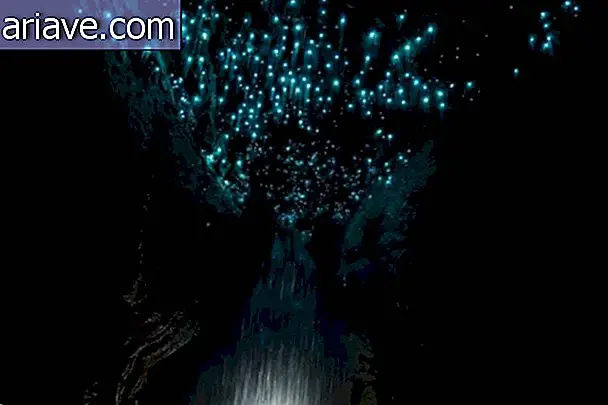Megalodon: the scariest big fish ever to roam the Earth's seas
The megalodon - an extinct shark species - has come back to the news with the recent release of the feature-length "Megatubara" whose plot revolves around diver Jonas Taylor (played by Jason Statham), who is hired to rescue the crew of an attacked submarine. by the prehistoric big fish.

In the movie, Taylor is triggered by being a professional who specializes in venturing into deep water - and being one of the few humans to have come across one of these giant creatures. But in real life, what is the probability that some unlucky man will find a megalodon, and what's more about this insane shark?
Modest teeth
To this day there is a debate about the size megalodons - whose scientific name is Carcharocles megalodon - could reach, since all estimates were made mainly from the teeth of these megatubars. Well, dear reader, no complete copy has ever been discovered and the models out there were created almost exclusively based on the size of the teeth of these animals.
Incidentally, "Carcharocles megalodon", the name of the species, means "giant tooth", which, in our opinion, is quite appropriate considering the size of the teeth that filled the mouths of sharks. Take a look at this modest little thing below:

The largest megalodon tooth ever reported is an impressive 17.8 centimeters in length, about three times larger than a great white shark's tooth. Of course, to have a mouthful of teeth of this size - they were over 270 - the animal had to be huge !

However, more recent studies point out that the megalodons were probably not as giant as some estimates from the past - and certainly much smaller than the monster in the movie! While some researchers calculated that prehistoric sharks could reach about 25 meters in length, other more measured estimates concluded that fish could measure up to 18 meters.
The most recent studies suggest that the megalodons were about 10 meters, which means that they were larger than their modern descendants, the great white sharks, which can reach 6 meters, and about the size of sharks. whale, which total around 9.5 m.
Kings of the Seas
Even though the megalodons weren't as colossal as the movie's monster, they were respectable creatures and probably found themselves at the top of their natural habitat's food chain. Scientists believe these animals fed on marine mammals such as dolphins and whales, creatures like seals, sea lions, turtles and possibly other sharks as well.

In addition, researchers still bet that megalodons were voracious predators - and there are even theories of how they hunted their prey! One possibility is that he would attack these tails and fins so that the victims could not escape and only then snap their bodies.
Interestingly, megalodon teeth have already been discovered all over the world - with the exception of Antarctica - and so scientists think that, just as with dinosaurs, these sharks preferred warmer weather. As such, they possibly sought the shallow, warm waters to hunt.
Were they really extinct?
Since there is no complete fossil record of these sharks, no one is sure when the megalodons became extinct. But analysis of the fossils found suggests that these creatures disappeared from Earth between the Miocene and Pliocene, that is, between 15.9 million and 2.6 million years ago.

This means that megatars disappeared from the planet before humans evolved around here, as the earliest ancestors of the genus Homo sapiens originated around 2.5 million years ago on Earth. One possibility is that they perished as a result of reduced habitat and famine as well as cold due to the cooling resulting from the arrival of an Ice Age.
On the assumption that there are still any of these megatars sneaking into the abyssal regions of the oceans, such as carcasses, whole bodies, fossils less than millions of years old, and no sign of survival, the chance that there is any megalodon alive out there is minimal. “Minimal” because we will always find someone convinced that these sea monsters have not been extinguished, but as far as you can be sure to see one of them, just watching the movies!
***
Do you know the Mega Curioso newsletter? Weekly, we produce exclusive content for lovers of the biggest curiosities and bizarres of this big world! Register your email and do not miss this way to keep in touch!











